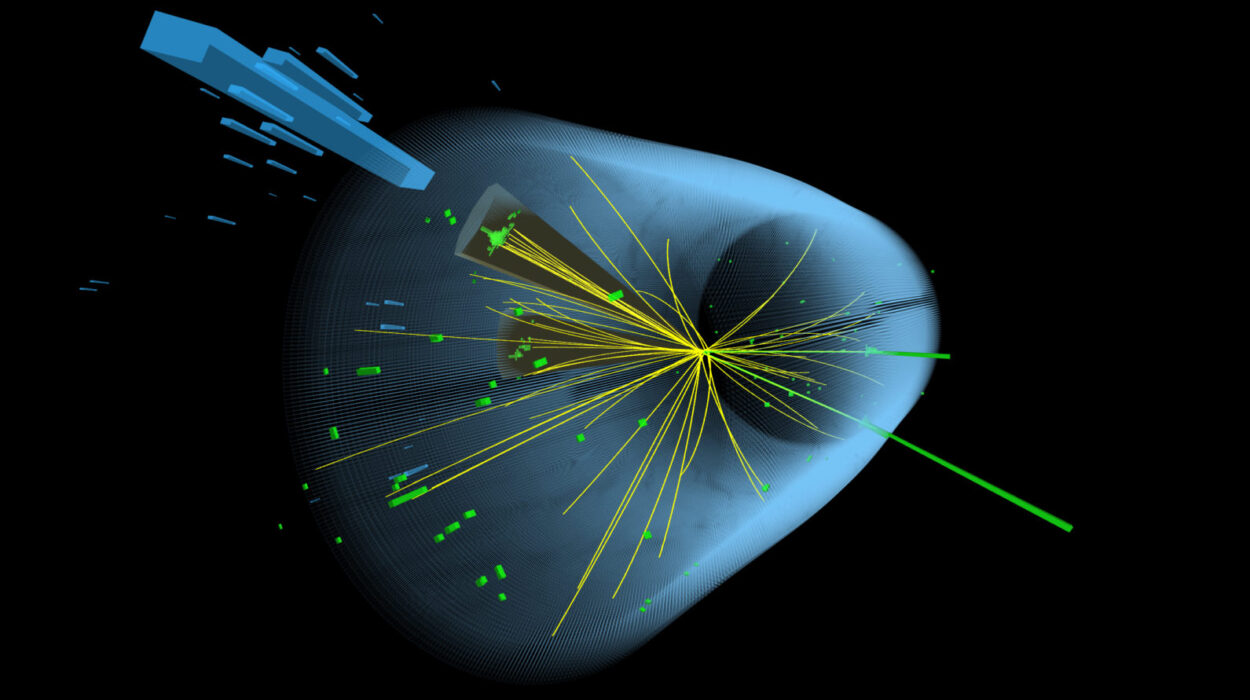Robots have long captured the human imagination. From the mechanical servants of ancient myths to the futuristic androids of science fiction, humanity has dreamed of machines that could think, move, and work alongside us. Today, those dreams are rapidly becoming reality. Robotics, once confined to factory assembly lines, has expanded into nearly every aspect of society—from healthcare and agriculture to space exploration and even our homes.
The rise of robotics is not just about convenience or efficiency; it is about a profound shift in how humans interact with technology, how economies function, and how societies evolve. The transformation ahead is breathtaking, and in many ways, it has already begun. Here are fifteen ways robotics is set to reshape our world in the coming decades.
1. Revolutionizing Healthcare
One of the most promising applications of robotics lies in healthcare. Robots are already assisting surgeons with delicate procedures, providing precision that surpasses even the most skilled human hands. Robotic surgical systems like the da Vinci Surgical System allow doctors to operate through tiny incisions, reducing recovery times and minimizing risks for patients.
Beyond surgery, robots are helping in rehabilitation—exoskeletons are giving paralyzed individuals the ability to walk again. Hospital robots are delivering medication, disinfecting rooms with ultraviolet light, and even providing companionship to patients. In the near future, we may see robotic caregivers supporting the elderly, monitoring vital signs, and ensuring safety at home.
By blending compassion with precision, healthcare robotics could radically improve both lifespan and quality of life.
2. Transforming Agriculture
The global population is projected to reach nearly 10 billion by 2050, and robotics will play a crucial role in feeding the world. Agricultural robots, or “agribots,” are revolutionizing farming by planting seeds, weeding fields, monitoring soil health, and harvesting crops with extraordinary efficiency.
Drones are being used to survey vast farmlands, mapping areas that need irrigation, fertilizer, or pest control. Meanwhile, robotic harvesters can pick delicate fruits like strawberries without damaging them, a task that once required intensive human labor.
By reducing waste, maximizing yields, and making farming more sustainable, robots could ensure food security in an increasingly resource-stressed world.
3. Redefining Transportation
Self-driving cars are no longer science fiction—they are already on our roads. Autonomous vehicles, powered by robotics and artificial intelligence, promise to make transportation safer, faster, and more accessible. These vehicles can reduce traffic accidents caused by human error, optimize traffic flow, and even transform how cities are designed.
Beyond cars, robotics is revolutionizing shipping and logistics. Autonomous trucks are hauling goods across highways, while delivery robots and drones bring packages directly to our doorsteps. In the long term, we may even see robotic air taxis transforming urban mobility.
This robotic revolution in transportation could dramatically reduce accidents, lower costs, and make commuting a completely different experience than it is today.
4. Reinventing Manufacturing
Manufacturing was one of the first industries to embrace robotics, and the transformation is far from over. Modern robots can assemble electronics, weld car parts, and package goods with speed and precision unmatched by humans. Collaborative robots, or “cobots,” are designed to work side by side with people, enhancing productivity while maintaining safety.
As robotics and AI converge, factories of the future will become almost entirely automated, with smart machines coordinating production, predicting maintenance needs, and adapting to demand. This could lead to unprecedented efficiency and innovation but also poses challenges for the human workforce.
Manufacturing robots are not just tools; they are reshaping global supply chains and redefining what is possible in industrial production.
5. Protecting the Environment
Robotics is emerging as a powerful ally in the fight against climate change and environmental destruction. Drones are monitoring deforestation, tracking wildlife populations, and mapping coral reefs. Robots are being developed to collect plastic waste from oceans, plant trees at scale, and clean oil spills with minimal ecological disruption.
Autonomous underwater vehicles are exploring fragile ecosystems deep in the oceans, places too dangerous or inaccessible for humans. Robotic technology is even being used to design sustainable energy systems, from optimizing wind turbine maintenance to inspecting solar panels.
By taking on dangerous, large-scale, and repetitive environmental tasks, robots may prove indispensable in preserving the health of our planet.
6. Advancing Space Exploration
Space has always been one of the most exciting frontiers for robotics. Robots like the Mars rovers Curiosity and Perseverance have already uncovered vital clues about the Red Planet. Unlike humans, robots can endure extreme conditions, work continuously without rest, and perform tasks far beyond Earth.
Future space missions may rely on swarms of robots to build habitats, mine asteroids, and even explore the icy moons of Jupiter and Saturn for signs of life. Humanoid robots like NASA’s Robonaut are being tested for space station maintenance, reducing risks for astronauts.
Robotics is not just extending humanity’s reach into space—it is preparing the way for humans to eventually live and thrive beyond Earth.
7. Enhancing Education
Robotics is increasingly making its way into classrooms, both as a tool for teaching and as a subject itself. Educational robots help children learn coding, problem-solving, and creativity. They make abstract STEM concepts tangible, engaging students with interactive, hands-on experiences.
Beyond the classroom, robots are being developed as tutors and companions, offering personalized lessons tailored to a student’s pace and learning style. For children with special needs, robotic aids can provide unique learning opportunities and therapeutic benefits.
In the future, robotics could make education more accessible globally, bridging gaps in resources and bringing knowledge to underserved communities.
8. Redefining Warfare and Security
Robotics has already transformed modern warfare, and its influence will only grow. Drones are used for surveillance, reconnaissance, and targeted strikes. Unmanned ground vehicles can scout dangerous terrain, defuse bombs, and deliver supplies to soldiers.
However, this raises ethical concerns. Autonomous weapons, or “killer robots,” could make decisions about life and death without human intervention. Nations and international organizations are grappling with the question of whether to regulate or ban such technologies.
On the defensive side, robots are increasingly important in cybersecurity, border protection, and disaster response. The challenge will be balancing technological advantage with ethical responsibility.
9. Improving Disaster Response
When earthquakes strike, hurricanes devastate, or wildfires spread, robots can go where humans cannot. Search-and-rescue robots can enter collapsed buildings, drones can map disaster zones, and robotic systems can deliver essential supplies to stranded communities.
In Japan, robotic technologies are being developed to respond to nuclear disasters, reducing human exposure to radiation. In wildfire-prone areas, robots are being designed to monitor and extinguish fires.
By enhancing disaster response, robotics has the potential to save countless lives and make recovery efforts faster and safer.
10. Expanding Entertainment and Leisure
Robots are not limited to serious applications—they are also reshaping how we play, relax, and create. In entertainment, robots are used in filmmaking, theme parks, and live performances, creating experiences once impossible. Social robots, designed to interact with people, are becoming companions, storytellers, and even entertainers in their own right.
In gaming, robotic devices can provide immersive physical interactions. Sports robots are being developed to train athletes, challenge players, and enhance human performance.
As robotics continues to merge with creativity, the line between technology and art will blur, opening new frontiers in human imagination.
11. Revolutionizing Construction
Construction is dangerous, labor-intensive, and often slow—but robotics is changing that. Autonomous construction robots can lay bricks, pour concrete, and even 3D-print entire buildings. Drones survey sites, ensuring safety and precision, while robotic exoskeletons help workers lift heavy materials without injury.
In disaster zones or remote regions, robotic construction could quickly build shelters, hospitals, or infrastructure. Combined with sustainable design, this technology could reduce costs and environmental impact while meeting the housing needs of a growing population.
The buildings of tomorrow may not be built by human hands alone but by armies of robotic assistants working tirelessly and efficiently.
12. Changing Retail and Hospitality
From robotic baristas brewing coffee to autonomous machines stocking shelves, the retail and hospitality industries are embracing automation. In some restaurants, robotic chefs are preparing meals, while robotic waiters deliver them to customers’ tables. Hotels are experimenting with robotic concierges and room service systems.
Delivery robots and drones are revolutionizing e-commerce, making instant delivery a reality. Meanwhile, robots equipped with sensors and AI can track inventory in real time, reducing waste and improving efficiency.
While these changes promise convenience, they also raise questions about the role of human workers in service industries. Still, for customers, robotics could make shopping, dining, and travel more personalized and seamless than ever.
13. Assisting the Elderly and Disabled
The world’s population is aging rapidly, and robotics offers a lifeline for elder care. Robotic companions can remind seniors to take medication, monitor vital signs, and even provide emotional support. Exoskeletons and mobility aids are empowering people with disabilities to walk, climb stairs, and live more independently.
Robots designed with empathy and accessibility in mind could ease the burden on healthcare systems while giving individuals dignity and autonomy. As populations continue to age, robotics will play a critical role in addressing one of society’s greatest challenges.
14. Redefining Work and Employment
Robotics will transform the workplace in ways both exciting and disruptive. Robots can perform repetitive, dangerous, or physically demanding tasks, freeing humans for more creative and strategic roles. Collaborative robots are already working alongside humans in factories, warehouses, and laboratories.
But automation also threatens to displace millions of jobs, from drivers to retail clerks. This creates a pressing need for societies to adapt through retraining, education, and rethinking the nature of work itself.
In the long run, robotics may not eliminate work but redefine it—shifting human effort toward creativity, empathy, and innovation, while machines handle the rest.
15. Pushing the Boundaries of Human Potential
Perhaps the most exciting aspect of robotics is how it can expand the very definition of what it means to be human. With robotic exoskeletons, we can lift far beyond our natural strength. With robotic prosthetics, amputees can regain not just mobility but even sensation and dexterity.
Brain-machine interfaces are allowing people to control robotic limbs with their thoughts, blurring the line between human and machine. One day, robotics could even extend our senses—giving us infrared vision, enhanced hearing, or the ability to explore environments inhospitable to organic life.
Robotics is not just about building machines; it is about building a future where humans themselves can transcend biological limits.
Conclusion
Robotics is no longer confined to science fiction—it is becoming the backbone of a new era. From healthcare to space, from education to entertainment, robots are transforming every aspect of human existence. They hold the power to solve global challenges, enhance our daily lives, and even redefine humanity itself.
Yet with this transformation comes responsibility. Ethical questions about jobs, warfare, privacy, and equality will shape how robotics integrates into society. The choices we make now will determine whether robotics becomes a tool of empowerment for all or a source of division.
One thing is certain: robotics is not a passing trend. It is the next great revolution, a force that will reshape our world in ways we can barely imagine. Humanity stands at the threshold of a future where humans and robots walk side by side, building a new chapter in the story of life on Earth.






